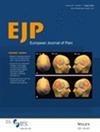There is little knowledge of what factors are needed for successful chronic pain management. We aim to identify psychosocial and treatment predictors of clinical recovery and improved quality of life (QOL) at 12-month follow-up across three chronic pain groups, based on the International Classification of Diseases-11: neuropathic pain, secondary non-neuropathic pain, and primary pain. Furthermore, we investigate baseline differences across diagnostic groups.
The sample included baseline and 12-month follow-up data from 1056 chronic pain patients from the Oslo University Hospital's Pain Registry. Logistic regression models investigated longitudinal associations between psychosocial and treatment characteristics, and the outcome measures clinical recovery and improved QOL. Characteristics were compared across the diagnostic groups.
Increased odds of clinical recovery and improved QOL were seen in patients receiving invasive treatment (OR = 8.04, 95% CI = 3.50–19.40; OR = 5.47, 95% CI = 2.42–12.86), while decreased odds of clinical recovery were seen for secondary non-neuropathic pain patients with pain-related disability (0.05, 95% CI = 0.01–0.29). In comparing baseline characteristics, neuropathic pain patients had lower QOL, and more severe insomnia compared to the other groups.
Invasive treatment modalities were strongly associated with clinical recovery and improved QOL. Although this could be due to patient selection, it does warrant further examination as an intervention alternative for chronic pain. Intervention efficacy, risk factors and predictors of clinical recovery across diagnostic groups should be further investigated through longitudinal RCTs.
This observational study indicates a potential advantage in sustained recovery for pre-selected individuals with chronic pain who undergo invasive treatments. The relationship between sustained recovery and psychosocial factors differs across neuropathic, secondary non-neuropathic, and primary pain patients. This suggests that employing ICD-11 for classifying patients into mechanistically distinct pain groups could inform the evaluation and management of chronic pain. Furthermore, factors previously identified as negative indicators for long-term outcomes in chronic pain cohorts were not clinically significant in this study.


